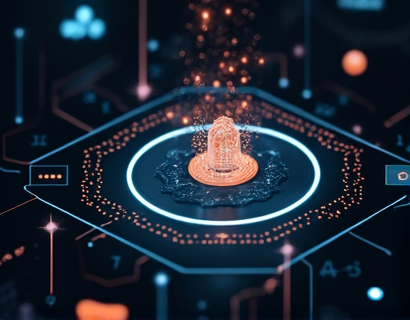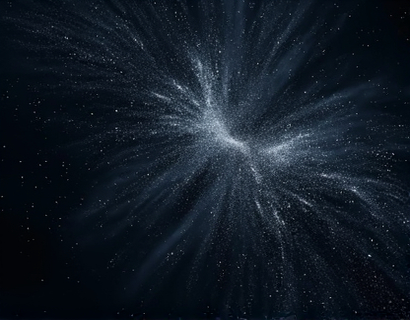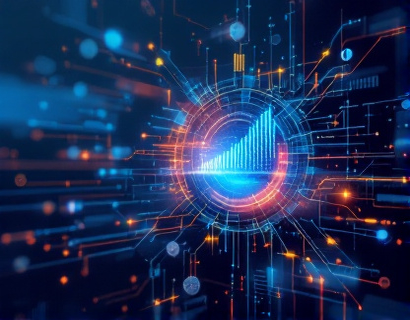Unlocking Cosmic Potential: Personalized Astronomy Learning Transformed by AI
The exploration of the universe has always been a quest that captivates human imagination. From ancient civilizations tracking celestial bodies to modern astronomers unraveling the mysteries of dark matter, the field of astronomy has evolved significantly. Today, with the advent of artificial intelligence, personalized astronomy learning is undergoing a transformative shift. This innovative approach leverages AI to tailor educational experiences, making the cosmos more accessible and engaging for students and enthusiasts alike.
The traditional methods of astronomy education, while foundational, often struggle to cater to the diverse learning needs and paces of individuals. A one-size-fits-all curriculum can leave many feeling overwhelmed by complex concepts or disengaged due to a lack of personalized attention. Enter AI-driven learning platforms, designed to revolutionize how we learn about the stars and the vast expanse of the universe.
Personalized Learning Paths
At the core of this transformation is the ability to create personalized learning paths. AI algorithms analyze a user's knowledge level, learning style, and interests to curate a customized curriculum. For beginners, the platform introduces fundamental concepts through interactive modules and simplified explanations. As users progress, the difficulty level adjusts, introducing more complex topics such as astrophysics, cosmology, and observational techniques.
This adaptive learning environment ensures that each user receives the right amount of challenge and support, fostering a deeper understanding and sustained interest in astronomy. The AI continuously monitors user interactions and performance, refining the learning experience in real-time. This dynamic approach not only enhances learning efficiency but also keeps users engaged and motivated.
Interactive Resources and Multimedia Content
Traditional textbooks and lectures, while valuable, can sometimes fall short in conveying the dynamic and visual nature of astronomy. AI-driven platforms enrich the learning experience with interactive resources and multimedia content. High-resolution images, 3D models, and virtual reality simulations allow users to explore celestial bodies and phenomena in an immersive way.
Interactive quizzes, simulations of celestial events, and gamified learning modules make the process enjoyable and memorable. For instance, users can simulate a space mission, navigate through the solar system, or witness the birth and death of stars. These hands-on experiences not only reinforce theoretical knowledge but also spark curiosity and a deeper connection with the subject matter.
Expert Guidance and Community Engagement
Learning about astronomy is not a solitary journey. AI platforms facilitate connections with a community of like-minded individuals, providing a supportive and collaborative environment. Users can join forums, participate in live Q&A sessions with expert astronomers, and engage in discussions on various topics ranging from planetary science to astrobiology.
These interactions offer valuable insights and perspectives, enriching the learning experience. Expert guidance is particularly crucial for tackling advanced topics and resolving complex problems. AI can match users with mentors based on their interests and skill levels, ensuring that the guidance is both relevant and effective. This personalized mentorship accelerates learning and helps users overcome obstacles more efficiently.
Real-Time Data and Observational Opportunities
One of the most exciting aspects of modern astronomy is the ability to access real-time data from telescopes and space missions around the world. AI-driven platforms integrate this data into the learning experience, allowing users to analyze current astronomical events and contribute to citizen science projects. This hands-on involvement in real research not only enhances understanding but also provides a sense of contribution to the broader scientific community.
Users can monitor live feeds from observatories, participate in data analysis tasks, and even discover new celestial objects. This direct connection to the frontiers of astronomical research makes learning more meaningful and inspiring. The platform can also suggest observational opportunities based on the user's location and the current celestial events, encouraging outdoor astronomy and a deeper appreciation of the night sky.
Overcoming Learning Barriers
Traditional astronomy education often faces barriers such as limited access to resources, high costs, and geographical constraints. AI-driven learning platforms democratize access to high-quality educational content, making it available to anyone with an internet connection. This inclusivity ensures that individuals from diverse backgrounds can pursue their passion for astronomy without financial or logistical hurdles.
Additionally, AI can provide translations and adapt content to different languages and cultural contexts, breaking down language barriers and making astronomy more accessible globally. This global reach fosters a more diverse and inclusive community of astronomy enthusiasts, enriching the collective knowledge and experiences.
Enhancing Engagement Through Personalization
Personalization extends beyond just the content to how it is presented and interacted with. AI algorithms can recommend topics based on a user's interests, recent activities, and performance. For example, if a user shows a keen interest in exoplanets, the platform might suggest articles, videos, and projects related to this field. This tailored approach keeps the learning journey relevant and engaging, reducing the likelihood of users feeling overwhelmed or losing interest.
Personalized notifications and reminders can also help users stay on track with their learning goals. The platform can send reminders for upcoming webinars, new content releases, or milestones to achieve. This level of personalization ensures that users remain engaged and motivated, viewing their learning journey as a continuous and rewarding process.
Future Prospects and Innovations
The integration of AI in astronomy education is just the beginning. Future advancements promise even more sophisticated tools and experiences. For instance, AI-powered chatbots can provide instant answers to questions, simulating a conversation with an expert. Machine learning models can predict a user's future interests and proactively curate content to keep the learning experience fresh and exciting.
As AI technology continues to evolve, the potential for innovation in astronomy education is vast. From augmented reality field trips to virtual collaborations with space agencies, the possibilities are endless. The goal remains the same: to make the universe's secrets accessible and enjoyable for everyone, fostering a deeper connection with the cosmos and inspiring the next generation of astronomers and space explorers.
In conclusion, AI-driven personalized astronomy learning is not just a technological advancement but a transformative shift in how we approach education. By combining tailored content, interactive resources, expert guidance, and community engagement, these platforms are redefining the learning experience. As we unlock the universe's secrets together, we also unlock the full potential of human curiosity and discovery.











































